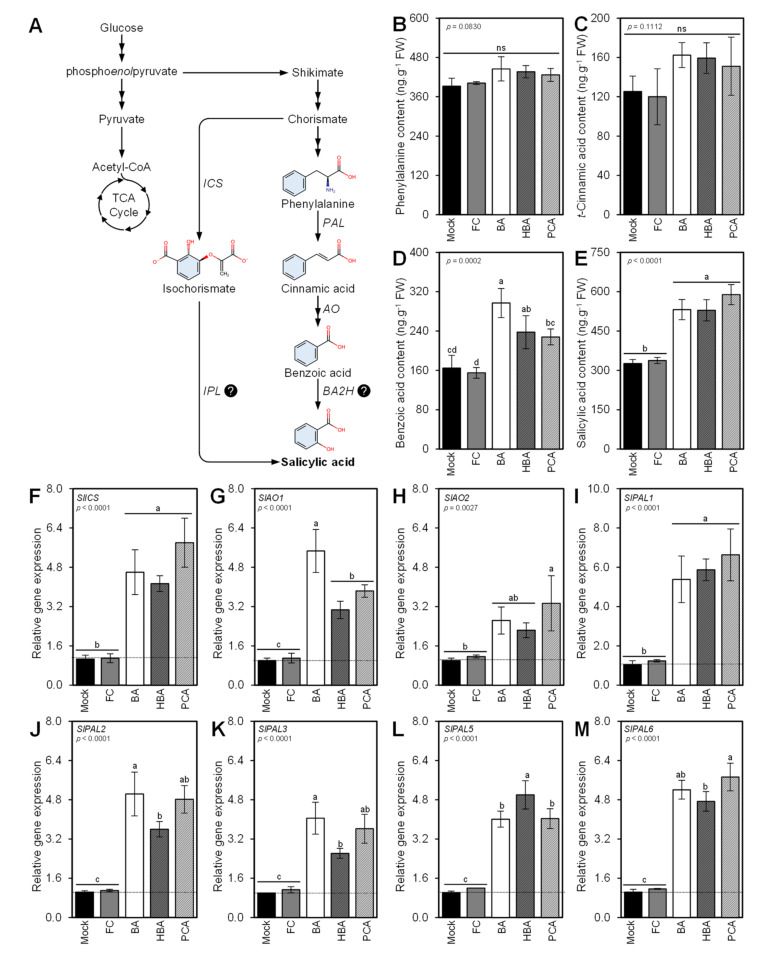Figure 8.
Benzoic acid (BA) and its hydroxylated derivatives, ρ-hydroxybenzoic acid (HBA) and protocatechuic acid (PCA), induce the salicylic acid (SA) biosynthesis pathway in Alternaria solani-infected leaves under greenhouse conditions. (A) Schematic representation of the SA biosynthesis pathway. (B–E) Endogenous content (ng·g−1 FW) of L-phenylalanine, t-cinnamic acid (tCA), BA, and SA, respectively, as detected in tomato leaves after the treatment with BA or one of its hydroxylated derivatives using GC-MS. (F) Relative gene expression of isochorismate synthase (SlICS), (G,H) relative gene expression of two aldehyde oxidase (SlAO1 and SlAO2, respectively), and (I–M) relative gene expression of five phenylalanine ammonia-lyases (SlPAL1, SlPAL2, SlPAL3, SlPAL5, and SlPAL6, respectively). Values represent the means ± standard deviation (means ± SD) of five biological replicates (n = 5). Different letters indicate statistically significant differences between treatments (p < 0.05). Mock: 0.2% dimethyl sulfoxide (DMSO)-treated (mock control), FC: difenoconazole-treated (fungicide), BA: benzoic acid-treated, HBA: ρ-hydroxybenzoic acid-treated, and PCA: protocatechuic acid-treated.

